Costa Rica’s Motto, Pura Vida, Comes Through in Its Humble Dish, Gallo Pinto
Our driver, Emilio, and our cultural guide, Antonio, kept glancing at their watches and speaking in quick, hushed Spanish as they navigated the packed streets of downtown San Jose. At first, I thought their thinly-masked concern has something to do with the swarms of subcompacts and mopeds zipping around the tour bus, but even as we cruised up the mountain highway, past lush coffee plantations, jungle river valleys, and mist-wrapped peaks, I could see their worry increase. When we got stuck behind a slow-moving farm truck, their stress became palpable.

Costa Rican produce
Normally, I’d dismiss traffic angst as easily as a long line at Starbucks, but the people of Costa Rica were famously easy going. Their national catch-phrase, “Pura Vida!” (pure life!) is a rally cry to relaxation. Their cultural mascot is the three-toed sloth, for Pete’s Sake!
It’s wasn’t until we crested a high mountain pass and wove through a platoon of road workers, that Antonio relaxed and patted the driver on the back. He caught my eye, smiled, and explained that the crew was only minutes from closing the entire national highway for routine maintenance. Had we not made it past in time, it would have meant a six-hour detour!
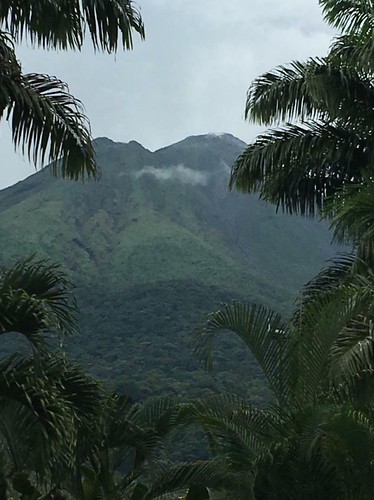
Arenal Volcano from La Fortuna
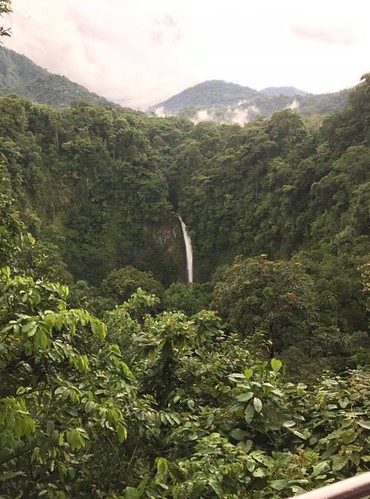
La Fortuna waterfall
“Pura Vida!” He winked and grinned away any remnant of stress.
During my nine days in Costa Rica as part of an educational tour with my 16-year-old daughter, I realized the entire country, from the steamy delta islands around Tortuguero, to the active volcanic spas of Arenal, to the lush, sandy beaches Playa Hermosa, had seemingly discovered the antidote for anxiety. It might have been the nearly perfect climate, the abundance of green, the array of wildlife, or the stability of the government, but the longer I was there, the more I became convinced that the easy smiles of the people had something to do with its national dish, Gallo pinto. Translated spotted rooster, Gallo pinto was named for its speckled appearance, and at first glance, the basic mix of rice, beans and vegetables isn’t particularly impressive. But there is something about simplicity, the freshness and the variety of Gallo pinto throughout Costa Rica that takes you by surprise.
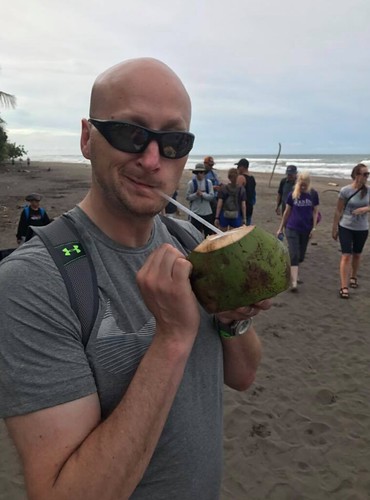
Tortuguero, Costa Rica - Beach view
Every home and restaurant has its own version, but each starts with the basics—rice, usually cooked in a rich broth that often included coconut milk, which adds earthy undertones to finished dish.

Gallo pinto
Every Gallo pinto has beans.
I saw black, pinto, pink, and red—always perfectly cooked.
As for the aromatics, most dishes had at the very least diced, sautéed onions and peppers.
From there, Gallo pinto can go anywhere. Fish, beef, pork, chicken, sausage, bacon, fruit are added to the mixture that resembles an unfried, fried rice. It can be eaten as a side dish or a plato forte a (main dish) for breakfast, lunch or dinner. And as surprising as it sounds, Gallo pinto never gets old. In fact, the few times it wasn’t part of my meal, I felt a bit…well, cheated. Even when I came home, I craved Gallo pinto for months.
It took me a while to figure out what it was that made this unassuming dish so alluring. But I think the fact that it is assuming is the key. Like Costa Rica itself, this lovely little tradition isn’t brazen, complicated or shocking. Gallo pinto is designed to be comfort food—maybe the ultimate comfort food created by a nation dedicated to easing stress.
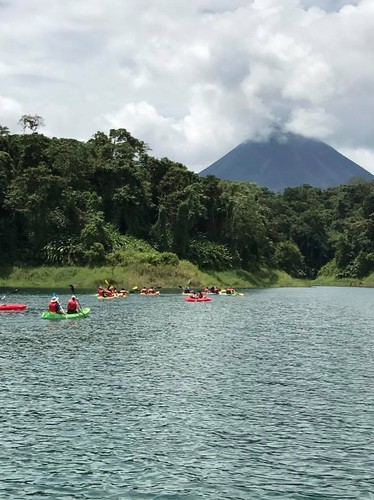
Kayaking on Lake Arenal
I doubt that science will ever prove Gallo pinto is the perfect stress antidote, but all you need to do is sample a few forkfuls to taste and you’ll taste a bit of Costa Rica’s famous stress-relieving Pura Vida in every bite.

Costa Rica sunset
An avid traveler, James Gough is the father of 3 and the author of Cloak. Read our author interview with him here!
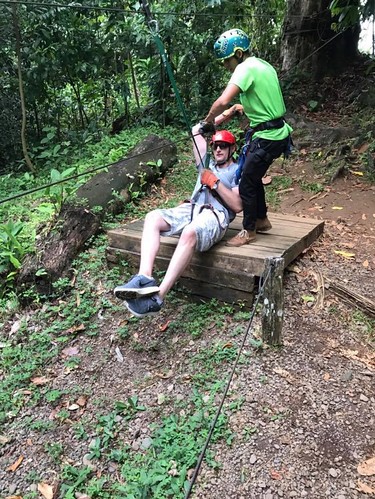
Canopy zip line in Sarapiqui, Costa Rica
All photos courtesy and copyright James Gough




















